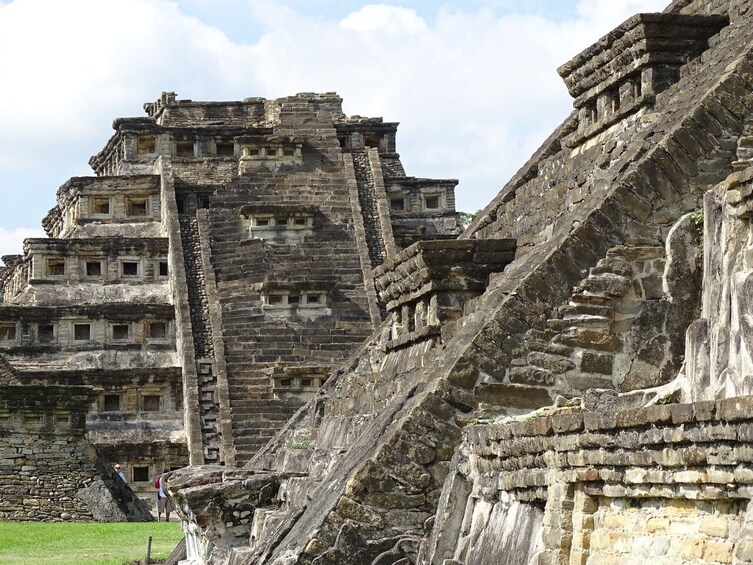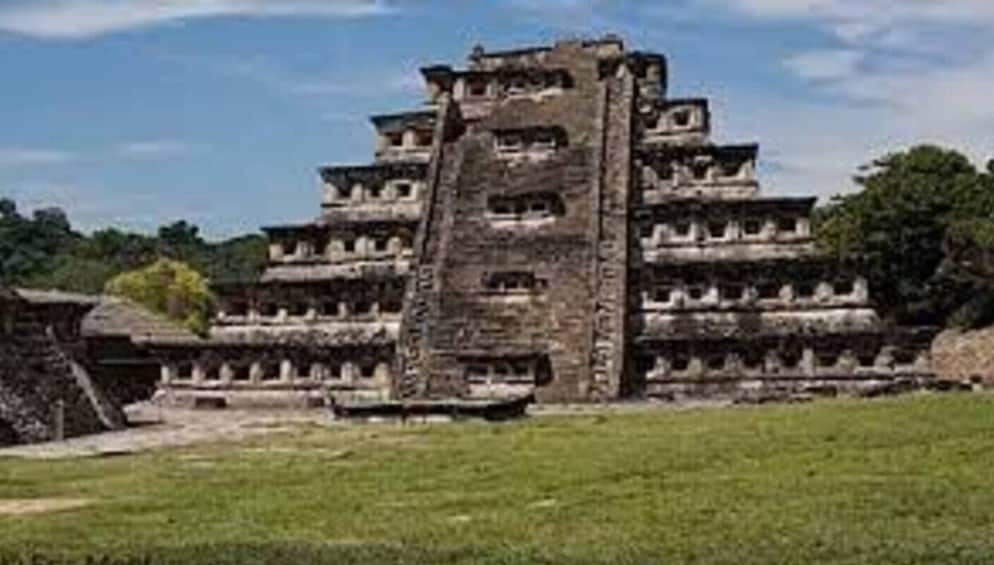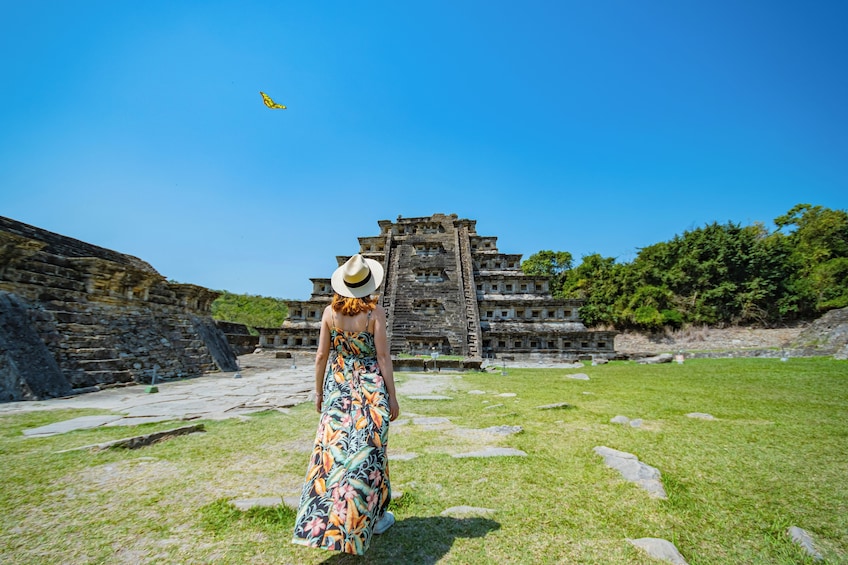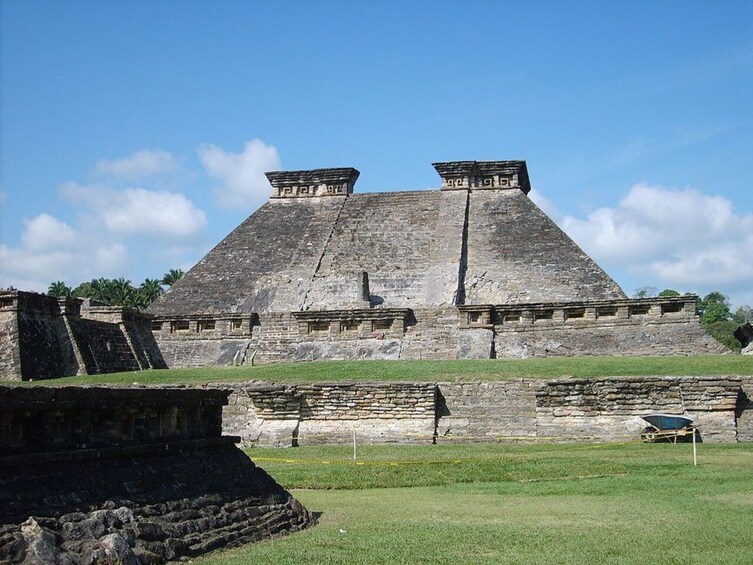It is believed that the city of Tajin was a very important center of the pre-Hispanic Totonac culture and reached its peak between 800 and 1150 AD.
El Tajin is the most important pre-Hispanic Mesoamerican city on the north coast of Veracruz. Its influence covers the basins of the Cazones and Tecolutla Rivers from the Sierra Norte de Puebla, where its influence is seen in the Yohualichan archeological zone, to the coastal plain of the Gulf of Mexico.
From the urban point of view in El Tajin, the large open spaces delimited by temples and slopes were privileged. El Tajin is the city with the highest number of ball courts: 17, which has been interpreted as a necessity because of the cultural diversity that, according to the time, could inhabit the city.
El Tajin is known for its decorations with niches, reliefs, and mural paintings. One of the most interesting constructions is the so-called Pyramid of the Niches, so called because the boards that make up its facades were decorated with niches that make a total of 365, which is why it has received attention from scholars in Mesoamerican calendars and worldview.




